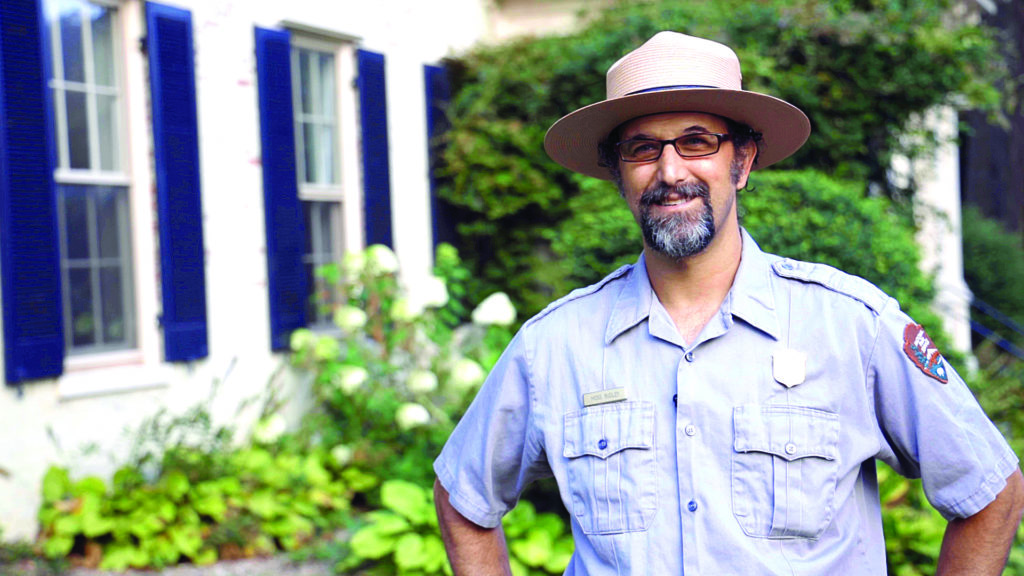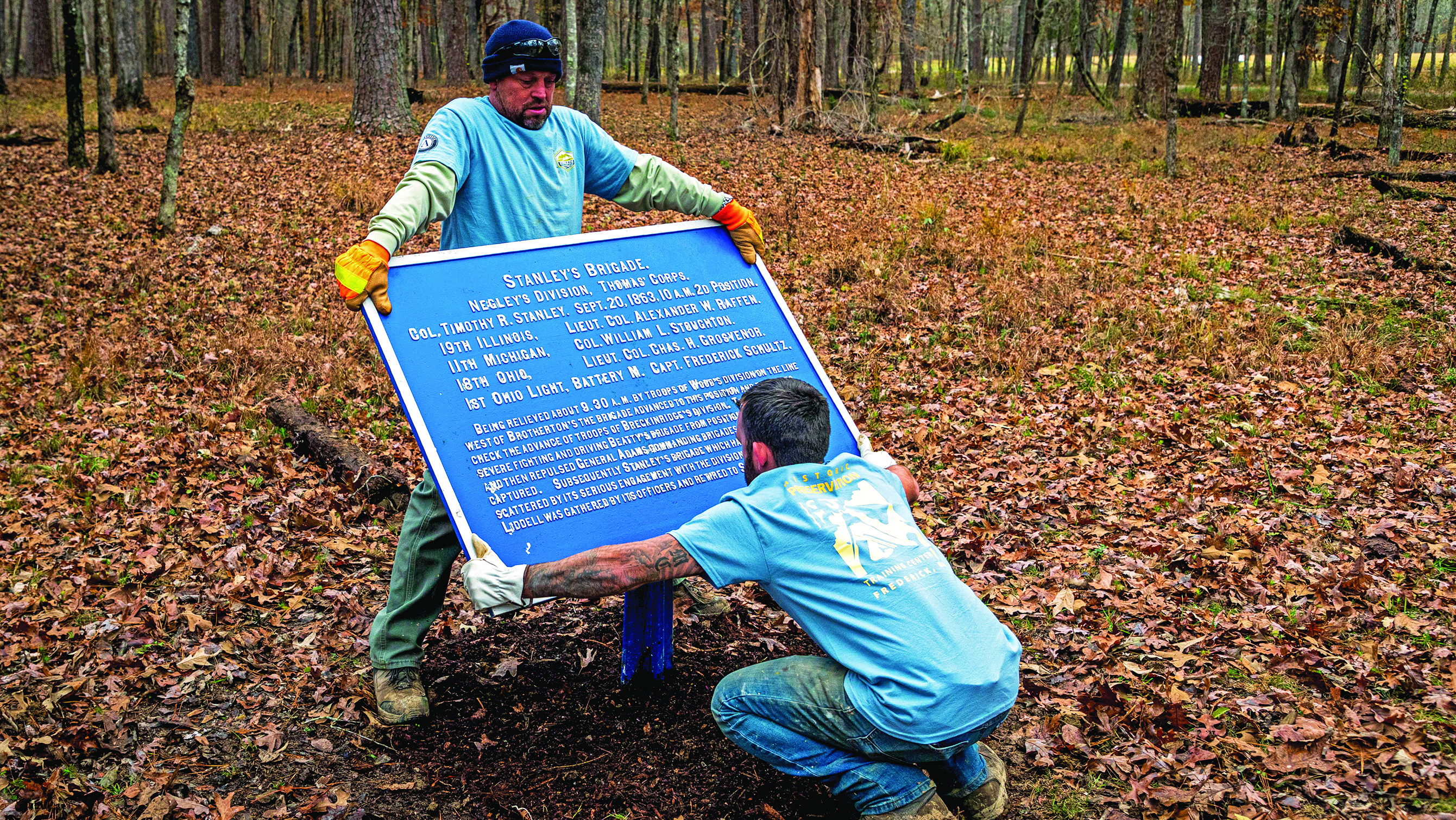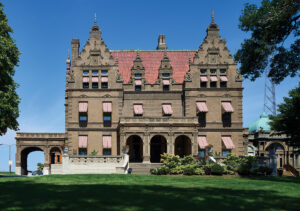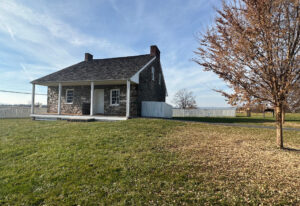National Park Service program helps preserve historic structures and monuments
Historic homes, structures, and monuments, these treasures are found across the country—and they don’t take care of themselves. As director of the National
Park Service’s Historic Preservation Training Center, Moss Rudley oversees efforts to keep them all in good condition. Armed with a degree in business administration, a minor in engineering, and years in the preservation field, he directs a program based on the Monocacy Battlefield outside Frederick, Md., developing skills to deal with everything from monuments to pest management. Many projects are Civil War related, but others include restoration of structures on the Channel Islands off Santa Barbara, Calif., and fortifications at El Morro in San Juan, P.R.
CWT: Tell me about the Historic Preservation Training Center.
MR: We have been in existence since 1977. We got started first with repair efforts undertaken to clean up the damage from an East Coast hurricane. Until then, there was no training center around the trades needed to care for the historic structures the park service maintains across the country. As of October 1, we’ve brought all the training centers that deal with historic preservation for the National Park Service under one umbrella. There are now about 85 staff.
CWT: What is your background?
MR: I grew up in the southern part of West Virginia working with my father. I started a career in historic preservation and historic trades, got on with the NPS in 2000, and went through the 3-year exhibit specialist training program at the Historic Preservation Training Center.
CWT: What types of work are Civil War related?

MR: We take on historic preservation projects as the main vehicle for our classrooms. We have to have work for our various employees and interns to do. We’re located in Frederick, Md., in Monocacy Battlefield—in the heart of most of the historic structures and landscapes and many are tied to the Civil War. Currently we’re executing projects in Manassas, Gettysburg, and other Civil War battle sites. At least 20-50 percent of our projects end up landing in historic areas around Civil War battlefields. Antietam, Harpers Ferry Historic Park, Gettysburg, and Manassas are all within local commuting distance and provide employees with projects. We have also been working in Chattanooga/Chickamauga, have a project in Andersonville, and we’re working in Vicksburg.
CWT: What is unique about preservation trades?
MR: One of the main things is how you care for historic wooden windows. We teach how to refabricate all the historic joinery, make repairs to them, how to properly remove glass, lead paint protocols—how to do things in a very safe and efficient manner. Then to the reinstallation, as well as adding weather-stripping, which makes them more energy efficient. They’re learning machine woodworking, how to properly glaze windows, painting prep and techniques.
CWT: Tell me about the training program.
MR: Two main training programs are under the umbrella of the traditional trades/apprenticeship program. One is the work force development side for the employees within the NPS; the other is for bringing new individuals into park service, and that is focused on youth and veterans. In fiscal year 2019 the traditional trade apprenticeship engaged about 50 participants, youth and veterans under the age of 35, at different park locations, doing historic trade and maintenance work under the guidance and mentorship of National Park Service employees. The work ranges from working at Fort Pulaski on the casemate to general monument maintenance at Gettysburg National Military Park.
CWT: Are you facing a shortage of workers?
MR: There is a shortage within the NPS of skilled trade workers who can meet the needs of something like $12-$14 billion dollars of deferred maintenance. You need individuals that can perform trade work: electrical, HVAC, non-historic preservation or trades that involve things like timber framing, slate roofing, being able to work on 200-year-old windows, just from a maintenance standpoint and just to maintain over a period of time. The average age of that work force now
is 56. The intake program is looking to build a cadre of future employees. For information, go to NPS.gov/HPTC.
CWT: Describe a particularly satisfying Civil War project.
MR: The rehabilitation of the Iowa memorial at Vicksburg was a project that I worked on directly with the superintendent of the park, as well as the governor of Iowa, who actually funded the project. We were able to completely rehabilitate all the stonework. Vicksburg had a lot of theft of bronze from their collection, and this particular monument had quite a lot of missing elements in the reliefs. One of the greatest achievements was to be able to have all those bronze elements recast and re-added to the monuments. We are also currently working on repairs to the stone and bronze of the Mississippi Monument there.
CWT: Is it challenging to find the right materials for a period structure?
MR: That is one of the real challenges, and one of the great aspects of historical preservation—whether it be a log cabin or a piece of Quincy granite that is no longer quarried. Southern yellow pine from the 1800s, for example, is rot resistant and durable, but southern pine today is very poor quality. It’s a unique challenge and to me it’s some of the fun of why preservation is cool.
CWT: Why preserve historic structures and landscapes?
MR: Short answer, it’s the law. Under the 1966 National Preservation Act, the National Park Service is bound to preserve the national assets in our care. The long answer is about preserving our nation’s history for the next generation so that the sites will be unimpaired. The act established the State Historic Preservation Office and all the subsequent reviews of any federal monument that goes into federal historic properties. State sites and other governmental sites are all bound by that, too. The act established guidelines and criteria for the Secretary of the Interior for doing the work.
CWT: It must be very challenging.
MR: We need to promote the trades so that individuals recognize that trades are an important part of what our history is founded on. As long as we have a built environment and historic structures that are over 50 years old, we will have a need to train people— people who feel it is an honorable profession to go out and be a plumber, an electrician, a carpenter, or a mason. As a society we need to promote those professions.
This interview appeared in the February 2020 issue of Civil War Times.





